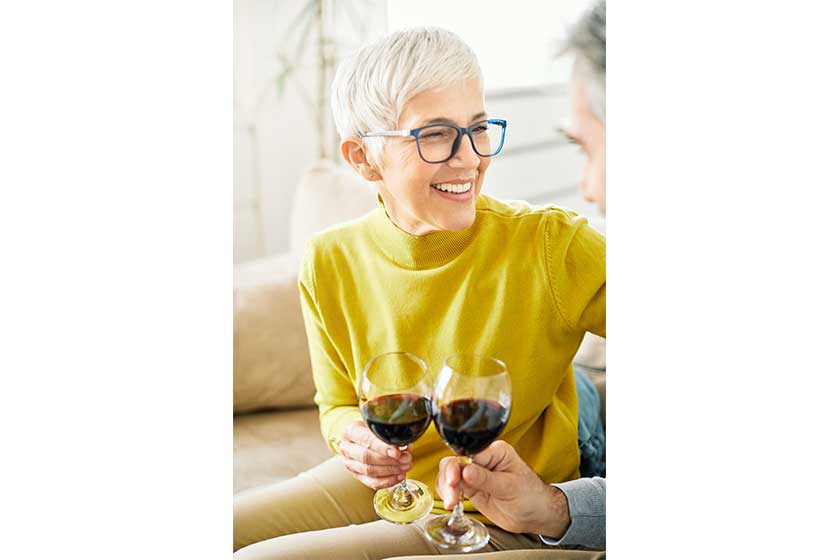When sipped in moderation, wine is a delicious way to unwind after a challenging day (a cheese plate also won’t hurt). Keep reading to learn all you need to know about the health advantages of wine —hello, antioxidants — as well as how much and what kind of wine to drink to stay in good health. Red wine isn’t the only choice, spoiler alert.
The article explores wine for seniors for your loved ones to enjoy in their 50s.
How Much Wine Is Healthy?
The most crucial thing you can do for your health when it comes to alcohol is to control how much you consume. The 2020–2025 Dietary Guidelines for Americans recommend that women limit their wine consumption to one glass per day.
There are wines that are “better for you” but it’s a good idea to remember certain fundamentals. At 12% alcohol-by-volume (ABV), a glass of wine really contains 5 ounces. Therefore, even if you’re drinking the driest red available, the alcohol will accumulate even if the sugar doesn’t.
So, if you’re hoping to make smarter decisions surrounding your alcohol consumption, kudos!
Fortunately, it doesn’t necessary mean you have to stop using it altogether. Not all wines are made equal and will differ in terms of calories, sugar, and alcohol content.
Dry Reds
Red, white, and rose wines all contain resveratrol, which has anti-inflammatory and antioxidant properties. However, red wine has more resveratrol than white wine because it spends more time fermenting with grape skins. Research shows that the resveratrol antioxidants found in red wines like pinot noir and cabernet sauvignon may help to improve heart health.
Furthermore, as aforementioned, if you stop to think about it, red wine itself has several advantages for humans. Antioxidants, polyphenols, and flavonoids are present in red wine. Pinot noir is the wine to drink if you want the health advantages that wine offers.
The healthiest red wine of all is thought to be this particular kind. Resveratrol, an antioxidant molecule that helps to enhance heart health, is more prevalent in pinot noir. It brings down blood pressure and harmful cholesterol. Additionally, resveratrol increases insulin sensitivity.
Low- or No-Sugar Wines
ABV, or alcohol by volume, isn’t everything. Wines’ alcohol by volume (ABV) ranges widely, from 5.5% to a super-boozy 20%. However, a wine, like Moscato, that has a lower ABV might nonetheless be quite sweet. Some wine brands don’t include sulfites or sugar during manufacturing; however, some do. This may make you feel better after a night of Netflix and chilling. For zero-calorie, low-alcohol sauvignon Blanc, chardonnay, or pinot noir are some popular recommendations.
Dry sparkling and white wines are wonderful choices if you also want to reduce the number of calories you consume from wine. Pinot Grigio, cava, brut Champagne, and Sauvignon Blanc are all recommended. These have less calories since they contain less sugar, which also lowers their sugar level. Moscato and port are two wines with higher residual sugar content.
Wine Spritzers
Sparkling water is a fun way to prolong your portion of wine and is very delightful in the summer. It can also be used to cut calories from prosecco-based drinks. For instance, a traditional Aperol Spritz calls for mixing equal parts of Aperol and prosecco with a spritz of soda water; omit the prosecco and instead use just one shot of Aperol and sparkling water. It tastes great, and the Aperol’s bitterness is more noticeable.
Conclusion
Although it is true that your loved ones should avoid wine, there are health advantages that can only be obtained by your loved ones who consume wine in moderation. Furthermore, your loved ones should still be free to drink wine as long as they select the healthiest varieties. So, for your next picnic, be sure to pack some wines!







